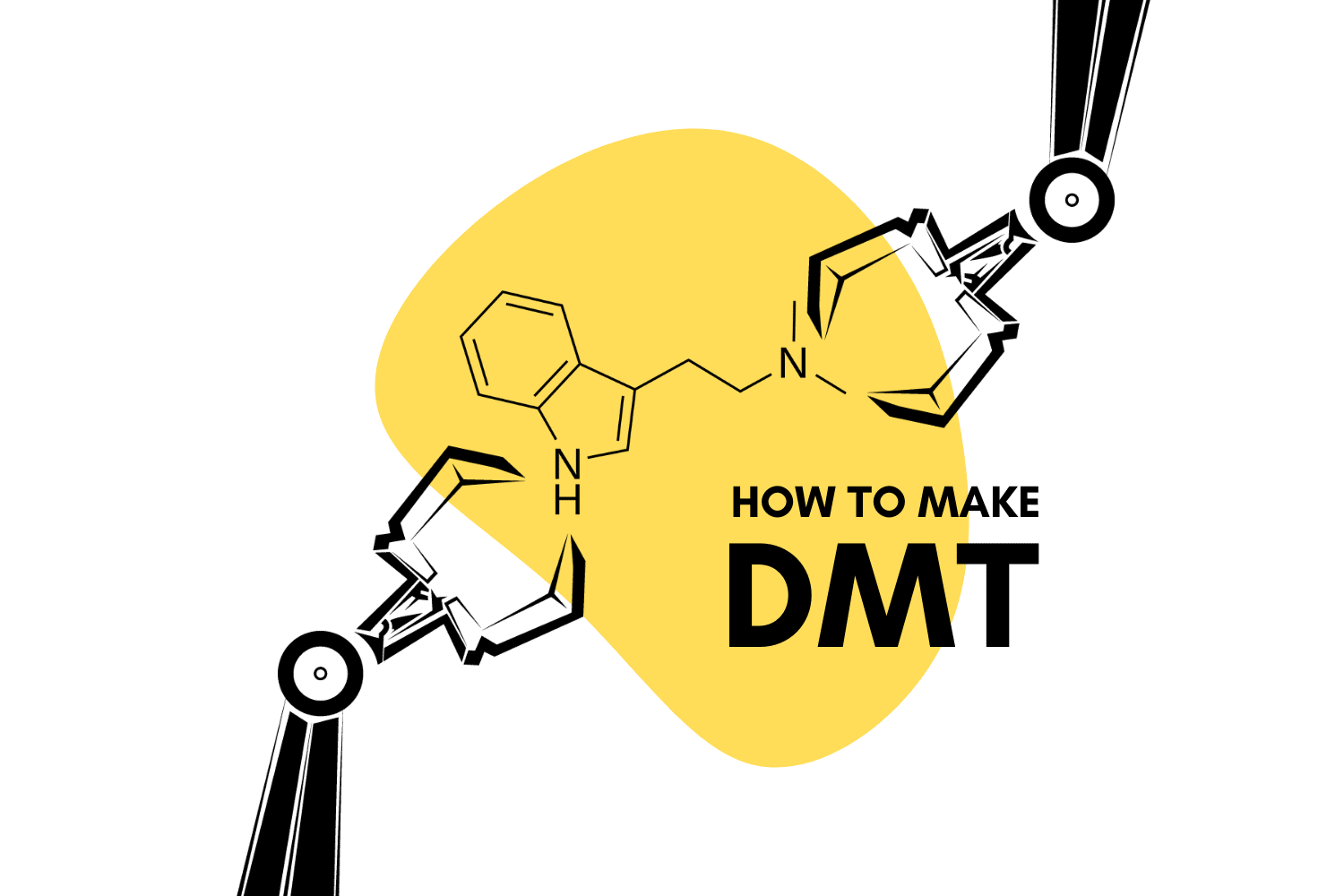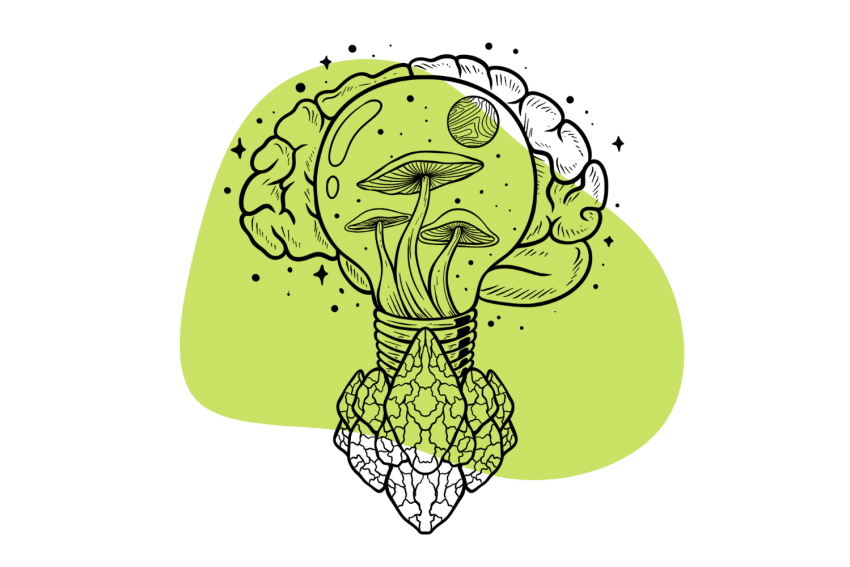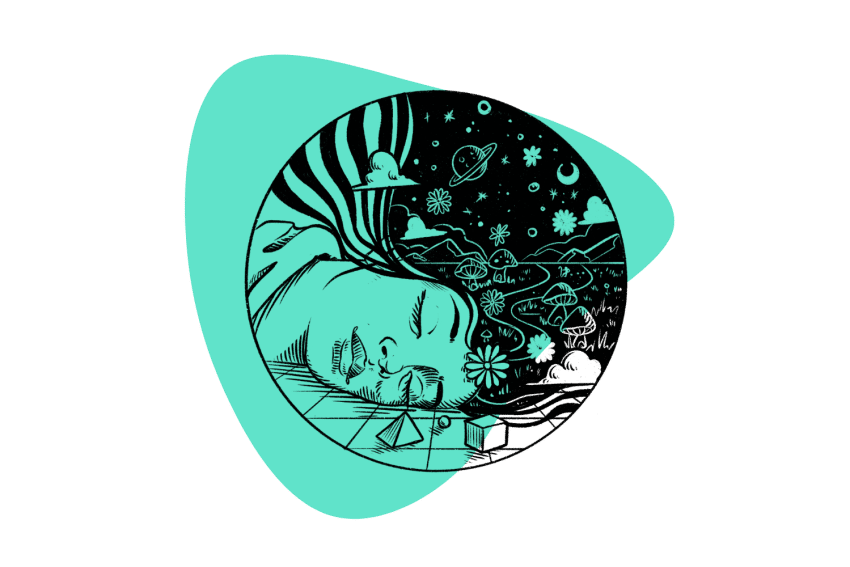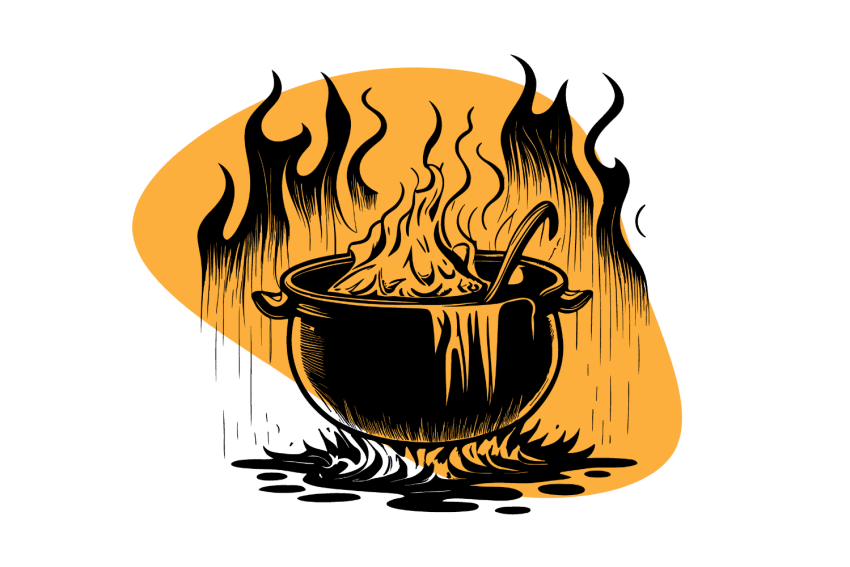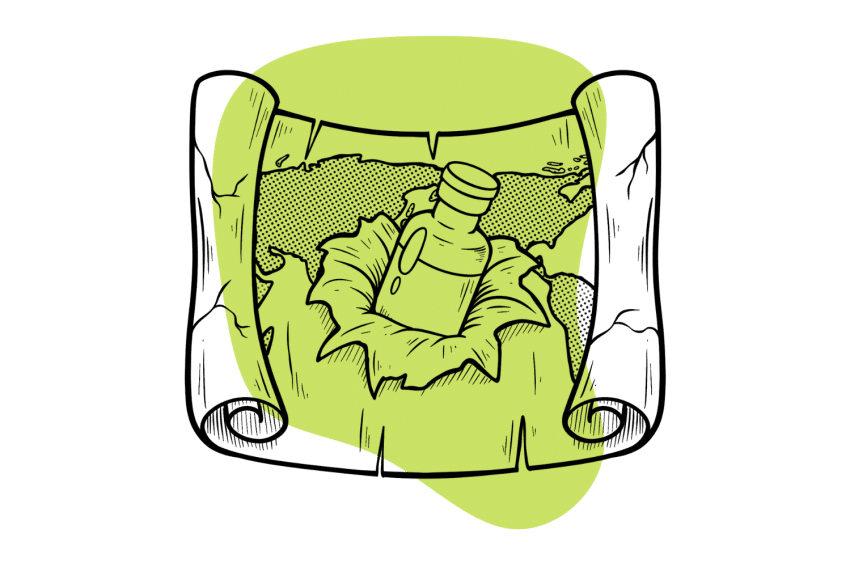Trip Killers: How To Stop an Acid Trip
Occasionally, a psychedelic trip can take a turn for the worse. This group of “trip killer” drugs are used by experienced trip sitters and medical professionals to stop the trip in its tracks.
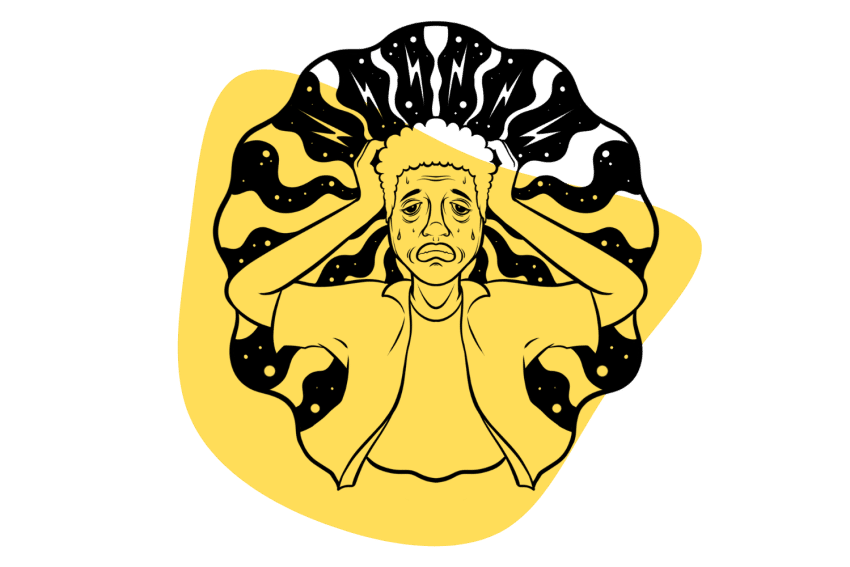
In most cases, “a bad trip” is just your mind’s way of showing you factors in your past or present life that need to be confronted and dealt with. However, in some cases, a bad trip can become nightmarish to the point that it may put yourself or others in danger.
In these situations, it may be beneficial to have some form of a trip killer on hand to get you out of the negative headspace and effectively “kill” the trip.
Let’s delve into what trip killers are, when to use them, explore the risks, and discuss what to expect when you use one halfway through a psychedelic journey.
What Are Trip Killers?
Trip killers are substances that help mellow out or block the effects of psychedelic substances. They “bring you back to reality” when a trip takes a dark turn.
Trip killers are taken with the intent to end a psychedelic trip. There is no one substance that will help end a psychedelic experience, and not all trip killers are effective for all psychedelics — you have to use the right trip killer depending on what substance you’re using.
The most common trip killers are benzodiazepines, but other drugs, such as certain antipsychotic medications, can also be effective.
Just as it’s important to know the right dose of the psychedelic you’re using, it’s important to take the right dose of trip killers too. Some of these substances are exceptionally potent and should be taken with great care.
Trip killers are a last resort and should only be used when the effects of a bad trip start to become dangerous to oneself or others.
Ideally, people who are at risk of such an experience will be under the supervision of a trained psychedelic facilitator who can help walk the user through the challenging visions they may be receiving. In many cases, the bad trips are where most of the benefits of psychedelics derive from — so stopping them in their tracks should be avoided if possible.
Top 7 Trip Killers
By far, the most effective and commonly used trip killers are benzodiazepine drugs. We’ll look at these substances first because they offer the strongest and fastest-acting way to end a psychedelic experience.
Benzodiazepines aren’t for everyone; some people should avoid them entirely. In these cases, there are other options available (keep reading).
It’s important to note that benzodiazepines can be dangerous, especially if mixed with other sedative drugs or alcohol. They’re also notoriously addictive. Taking benzos habitually doesn’t end well for anybody.
For now, let’s take a look at the most common trip killers:
1. Alprazolam (Xanax)
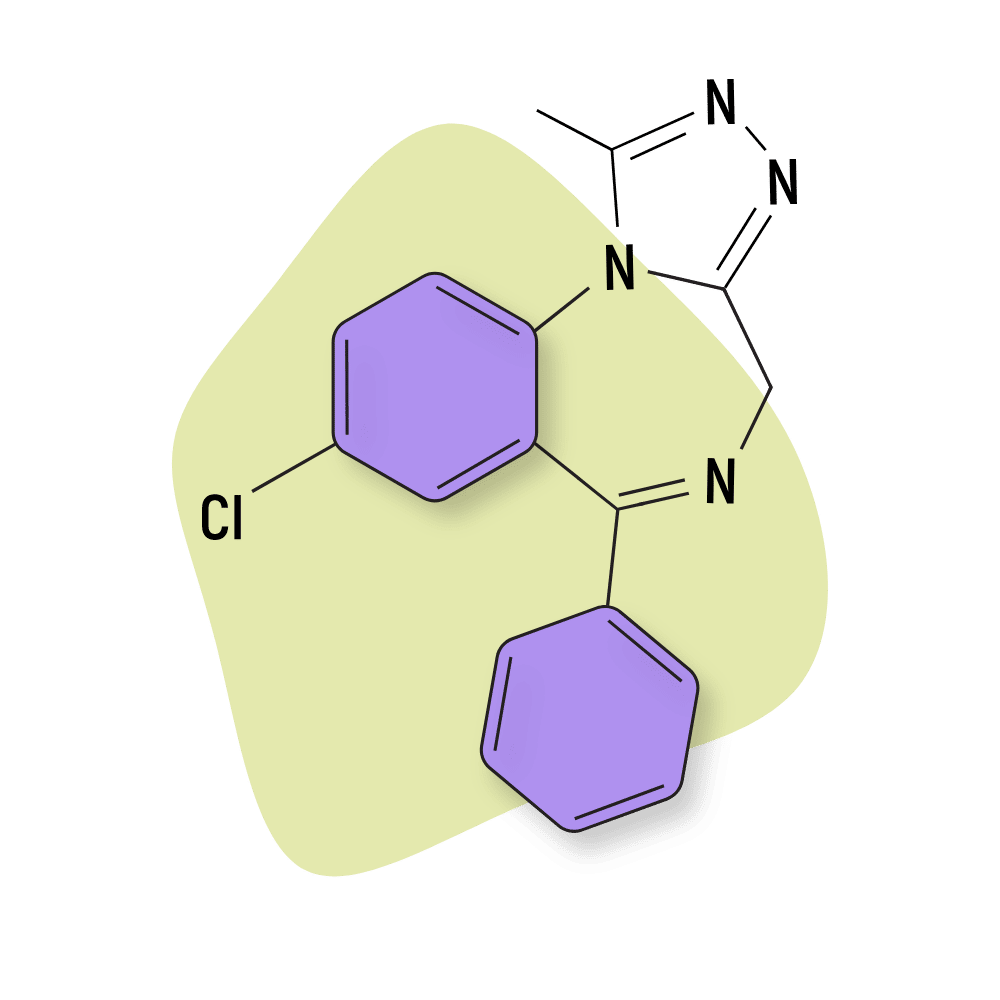
Alprazolam is one of the fastest-acting trip killers in the benzodiazepine family — but it’s also one of the shortest-lasting. The effects of Xanax, although fast-acting, only last for around four to six hours.
Xanax is a favored trip killer among psychonauts purely because of its fast-acting nature. It’s designed for people to use at the first sign of an anxiety attack to stop it in its tracks.
The effects of alprazolam start to kick in within 15 minutes or so and reach peak effects in as little as 45 minutes.
Xanax does have a habit of wiping your memory, in a sense. When consumed with other substances or at too high a dose, it can make you black out and lose all memory of the previous night.
When you consume Xanax as a trip killer, you should be prepared to lie down and get some rest. When you awake, you may have an extremely blurry memory and struggle to recall anything about the experience. This can be a positive or negative point, depending on what you want to achieve from the psychedelic trip.
2. Lorazepam (Ativan)
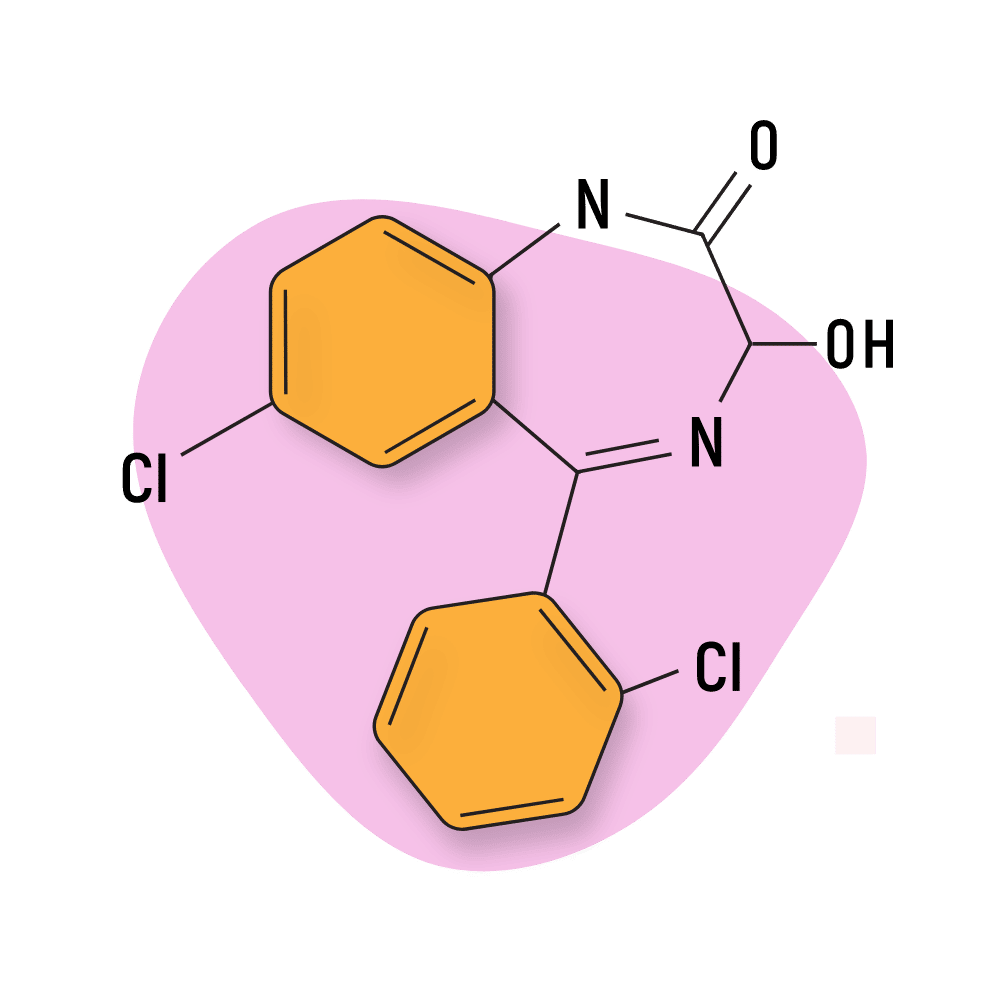
Lorazepam is considered an intermediate-acting benzodiazepine. This means it won’t kick in quite as fast as something like Xanax — but the effects last for over eight hours. This is a better option for long-lasting psychedelics, such as DOX compounds, 2CX compounds, or other amphetamine psychedelics.
Lorazepam is great for getting you out of a bad trip, but it may cause drowsiness to the point you fall asleep. This can be a plus since it allows you to rest easy after a bad experience, but it does put a complete halt on your psychedelic experience.
3. Diazepam (Valium)
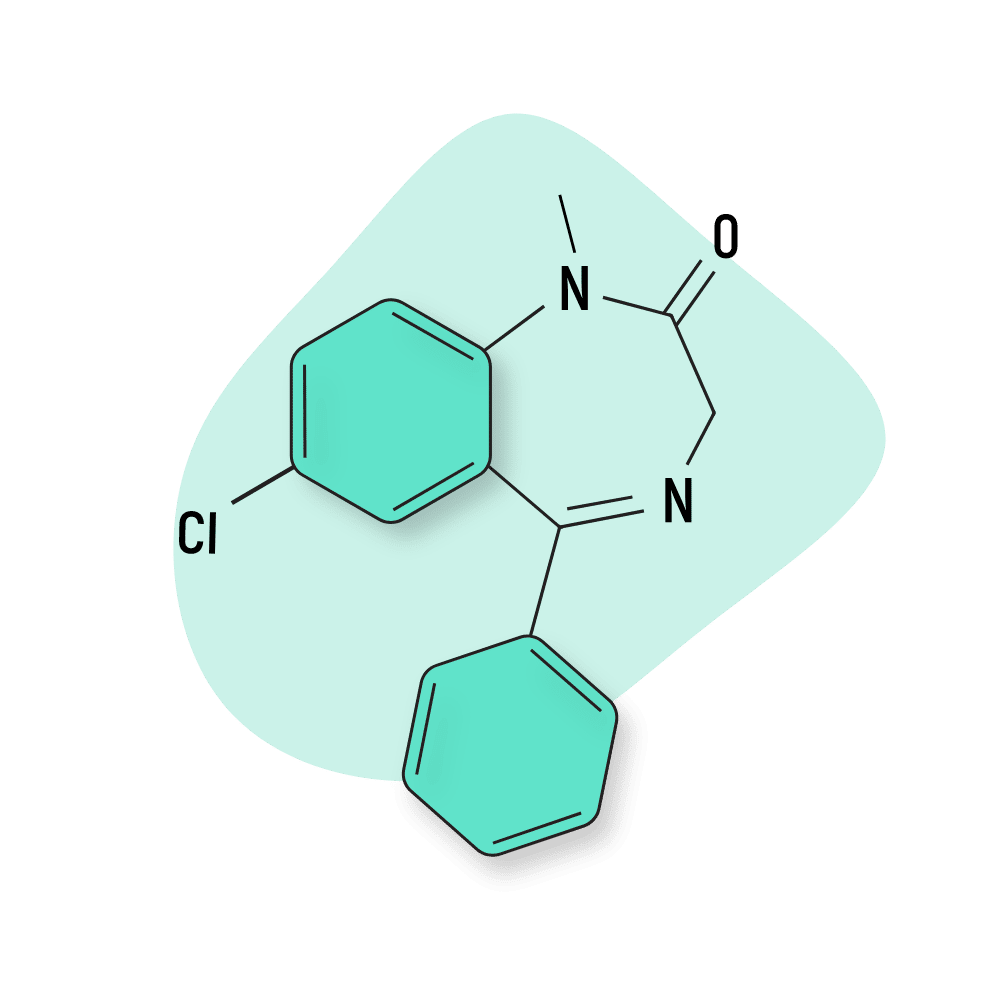
Diazepam isn’t as fast-acting as lorazepam and alprazolam, but it is one of the longest-lasting of the popular benzodiazepine trip killers. The effects of diazepam can last for over 12 hours.
It’s reported that this trip killer takes “too long” to take effect when swallowed in pill form. However, the onset of effects can be sped up significantly by chewing the drug, so it can be sublingually absorbed under the tongue.
Diazepam works great to get you out of a nightmarish thought loop, but it doesn’t have the same effect as lorazepam and alprazolam in the aspect of drowsiness. Many people report that taking diazepam during a bad trip helps them calm down without completely removing the psychedelic effects of the drug.
4. Clonazepam (Klonopin)
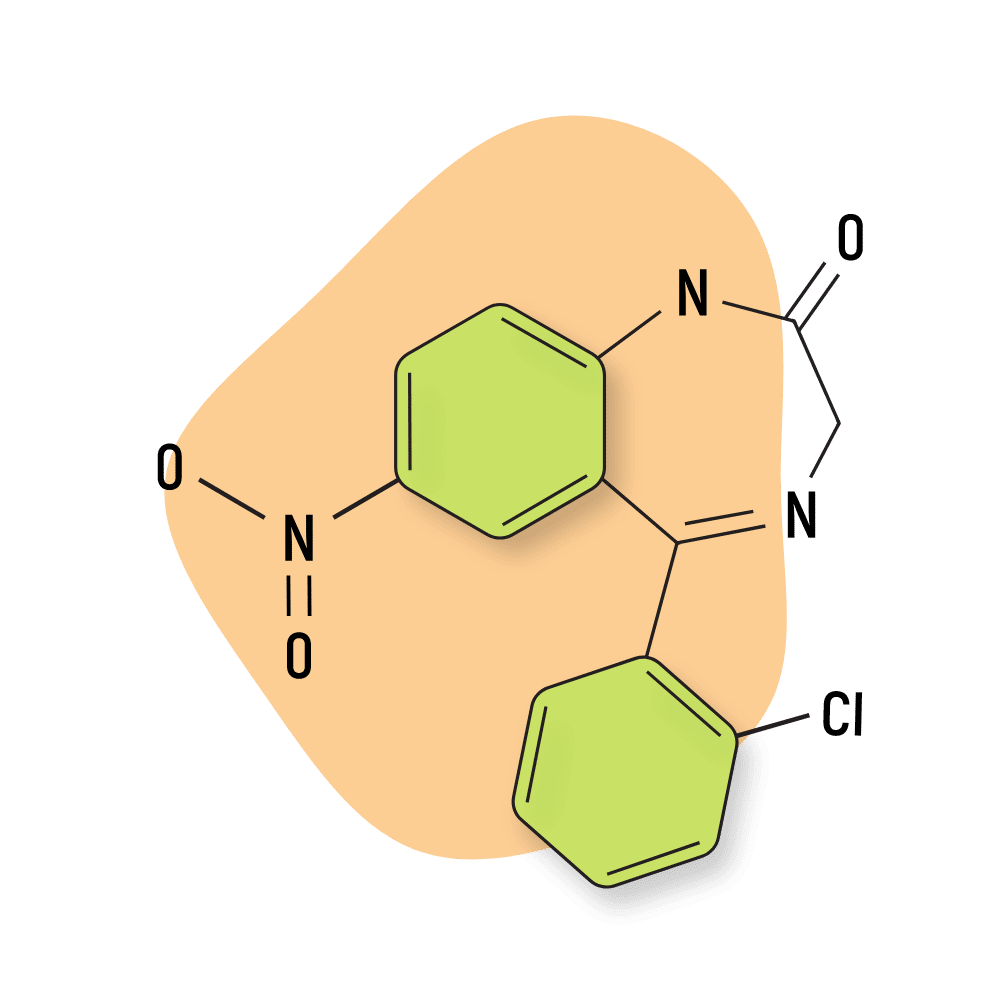
Clonazepam is considered the slowest-acting of the benzodiazepine trip killers. It can take between one and four hours after taking it to reach peak levels in the blood. Of course, this can be sped up by chewing the pill and allowing it to absorb sublingually.
Although clonazepam takes a long time to kick in, the effects can last up to 12 hours, and the half-life is also long, standing at around 40 hours — meaning it won’t be cleared from the body for a couple of days.
This is the least popular of the common benzodiazepine trip killers, but it’s often one of the easiest to get hold of (depending on where you live). Some like Klonopin for its euphoric nature, which many other benzodiazepines don’t have.
5. Zolpidem (Ambien)
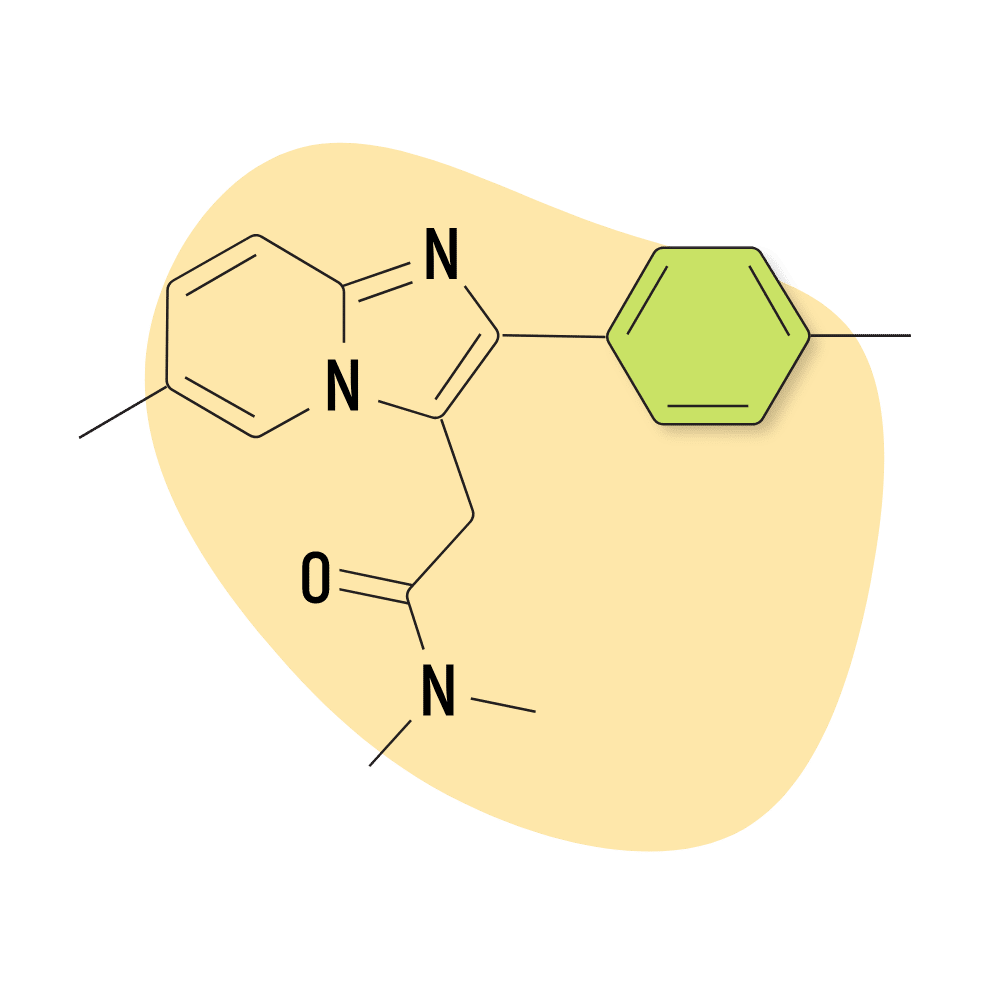
Zolpidem is classified as a Z-drug — which is a group of compounds that exert benzodiazepine-like effects but have an entirely different structure.
These drugs work in much the same way as benzos and are also considered useful as trip killers. But there’s one catch — these drugs tend to be much more sedative than their benzodiazepine cousins. People who take Ambien to stop a trip will almost always fall asleep shortly after. You may or may not remember the experience the following morning.
While Z-drugs carry a lower risk than most benzodiazepines, there’s still a great deal of risk associated with their use. Getting the dose right, avoiding mixing with other depressants, and only using if you’ve been approved by a doctor are still key elements for using these substances safely.
6. Quetiapine (Seroquel)
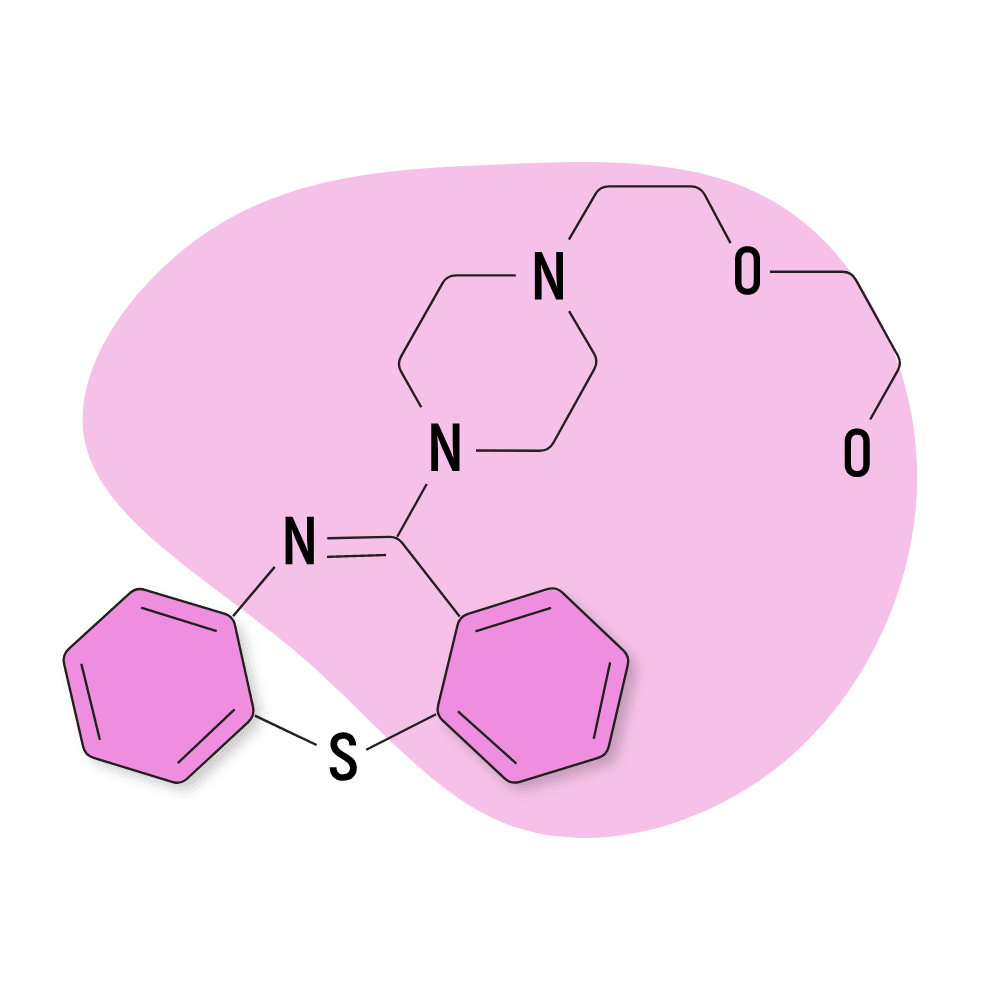
Although nowhere near as popular as benzos, another common option is antipsychotics like quetiapine (Seroquel).
Antipsychotic medications treat psychosis. People with schizophrenia, bipolar disorder, severe depression, and Alzheimer’s are often prescribed these.
Quetiapine is classified as an atypical antipsychotic. It differs from typical antipsychotics because it produces fewer extrapyramidal symptoms and has a lower risk of tardive dyskinesia. In simpler terms, it produces fewer side effects than typical antipsychotics, such as the inability to sit still, muscle contractions, tremors, and stiff muscles.
Antipsychotics are the best trip killers for people that can’t use benzodiazepines or Z-drugs.
Seroquel typically takes 20 to 60 minutes to kick in when consumed sublingually at a dose of around 25–50 mg.
7. Olanzapine (Zyprexa)
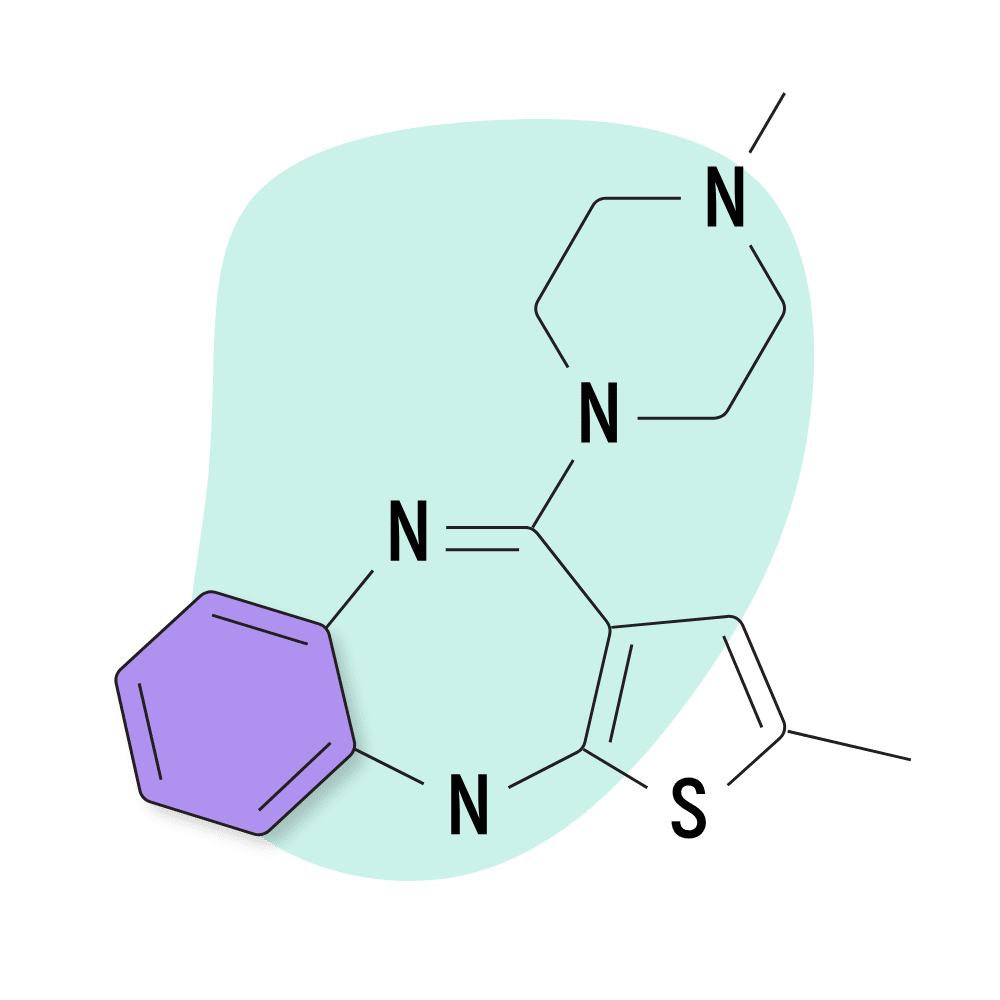
Olanzapine is another atypical antipsychotic reported to be effective in dulling the effects of psychedelics. This compound has a particularly high affinity for the 5HT2A receptor and is, therefore, better for killing the trips from tryptamine-based psychedelics like LSD, psilocybin, or DMT.
Zyprexa is less effective for dopaminergic or NMDA-based psychedelics such as the psychedelic amphetamines (MDMA, MDA, cathinones) or arylcyclohexylamines (PCP, ketamine, and others).
Olanzapine usually takes around 30 minutes to kick in at a 10–20 mg dose.
How Do Trip Killers Work?
Benzodiazepines such as diazepam or lorazepam (or other sedative anxiolytics) are usually the substances a doctor will administer if you’re submitted to the hospital due to signs of psychosis from consuming too much of a psychedelic substance.
These drugs work similarly to those for someone with a panic or anxiety attack. They have anxiolytic, sedative, and relaxant properties that all work to reduce anxiety levels and negative thought loops.
More specifically, benzodiazepines kill the trip by amplifying the activity of GABA in the brain. GABA is a neuroinhibitor — which means it reduces brain activity.
When we’re anxious, the inhibitory effects of GABA result in a dramatic reduction in anxiety levels. We think less, care less about our problems and feel more calm and relaxed. In higher doses, this causes full-on sedation.
The same concepts apply to psychedelic experiences. Paranoia, anxiety, and fear responses experienced during the psychedelic state can all be muted by dulling brain activity with GABA-boosting drugs.
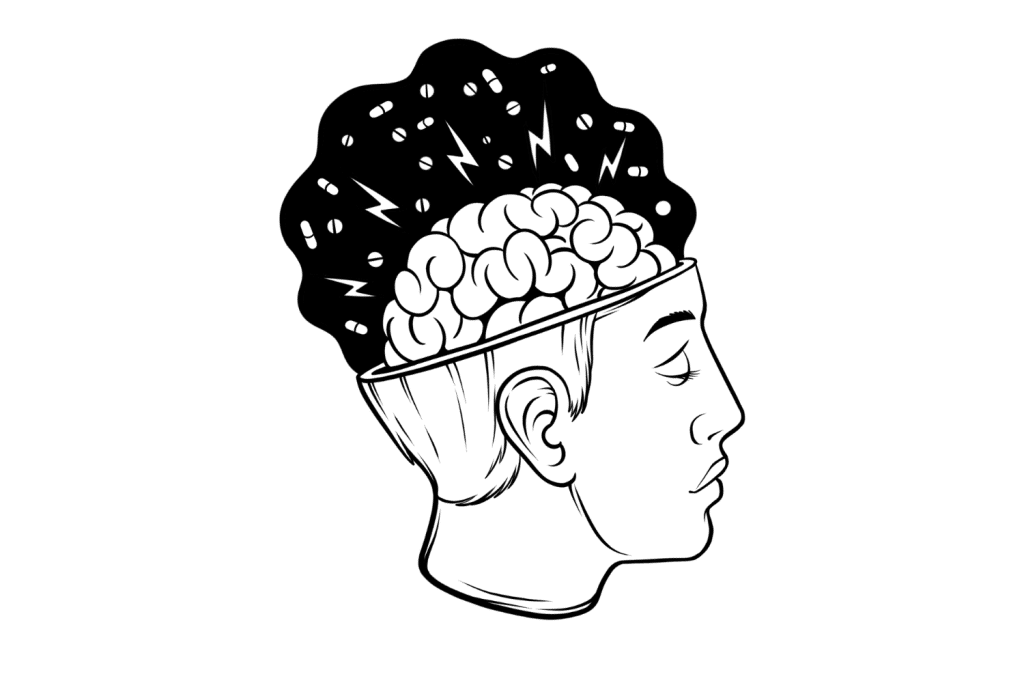
Antipsychotic trip killers work a little bit differently. These drugs work as serotonin and dopamine antagonists (blockers). The exact mechanism is still not fully understood, but the leading theory is that certain antipsychotics reverse the effects of psychedelics by blocking the 5-HT2A receptors.
5-HT2A is one of the main receptor sites on which psychedelics such as LSD and psilocybin work. Some, but not all, psychedelic substances bind to these receptors to induce their psychedelic effects.
How Long Do Trip Killers Take To Kick In?
Every trip killer is different — some kick in quickly (10–20 minutes); others take an hour or more.
Here are some of the average onset times for the four most popular benzo-based trip killers listed above.
These refer to the oral onset time of these drugs. It’s not a good idea to smoke, inject, or snort benzodiazepines for any reason.
- Alprazolam (Xanax): 10–20 minutes
- Lorazepam (Ativan): 20–45 minutes
- Diazepam (Valium): 1–2 hours
- Clonazepam (Klonopin): 45–60 minutes
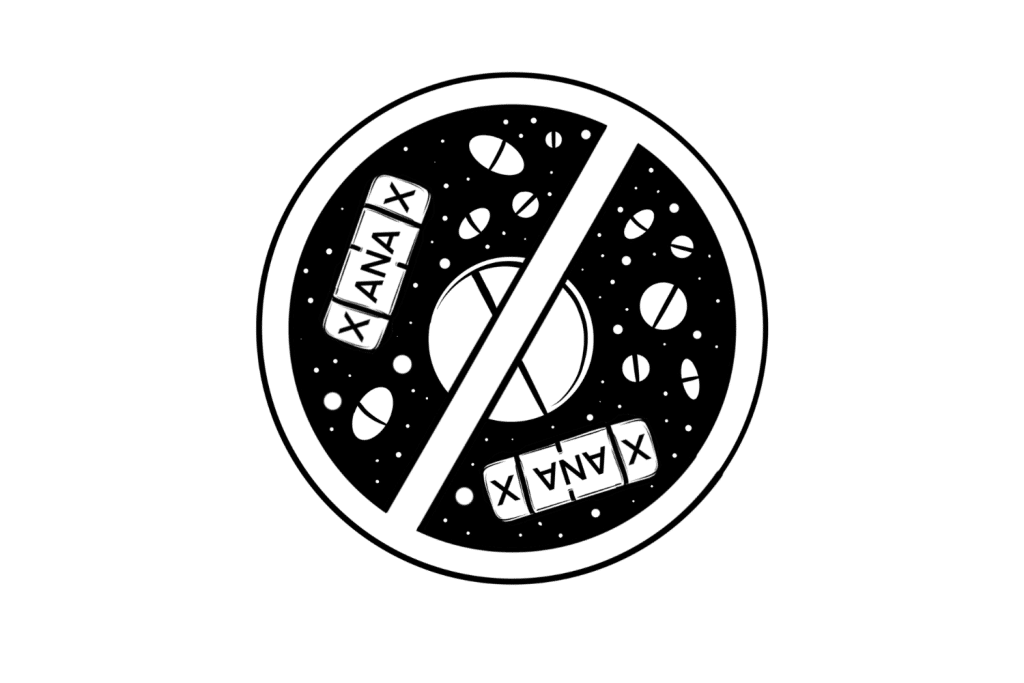
When Do Trip Killers NOT Work?
Trip killers don’t work on every psychedelic substance. Benzodiazepines and antipsychotic medications are effective for standard, serotonin-based psychedelics such as LSD and psilocybin. However, there are a few substances that don’t have any effective trip killers.
Always educate yourself on any substance before using it. You should know how much to take, what to expect during the trip, and onset times and duration. You should also know whether there’s an effective trip killer for it.
Psychedelics That Have Trip Killers
Psychedelic trips from some of the most commonly used psychedelics can be stopped by the use of benzodiazepines or antipsychotic medications.
These are the most prevalently used and have the most research surrounding them, though trip killers likely work on more substances than the ones listed below.
Here’s a list of commonly used psychedelic substances that do have effective trip killers:
- LSD (lysergic acid diethylamide) (and other lysergamide psychedelics)
- Psilocybin (the active compound in magic mushrooms)
- 4-AcO-DMT (synthetic shrooms)
- 5-MeO-DMT (the active compound in bufo toad venom)
- N,N-DMT (the active ingredient in ayahuasca)
- 2C-B (and other 2C psychedelics)
- NBOMes (N-bombs)
- Synthetic Cathinones (Bath Salts)
- MDMA (and other MDXX psychedelics)
- Mescaline (the active compound in Peyote & San Pedro cactus)
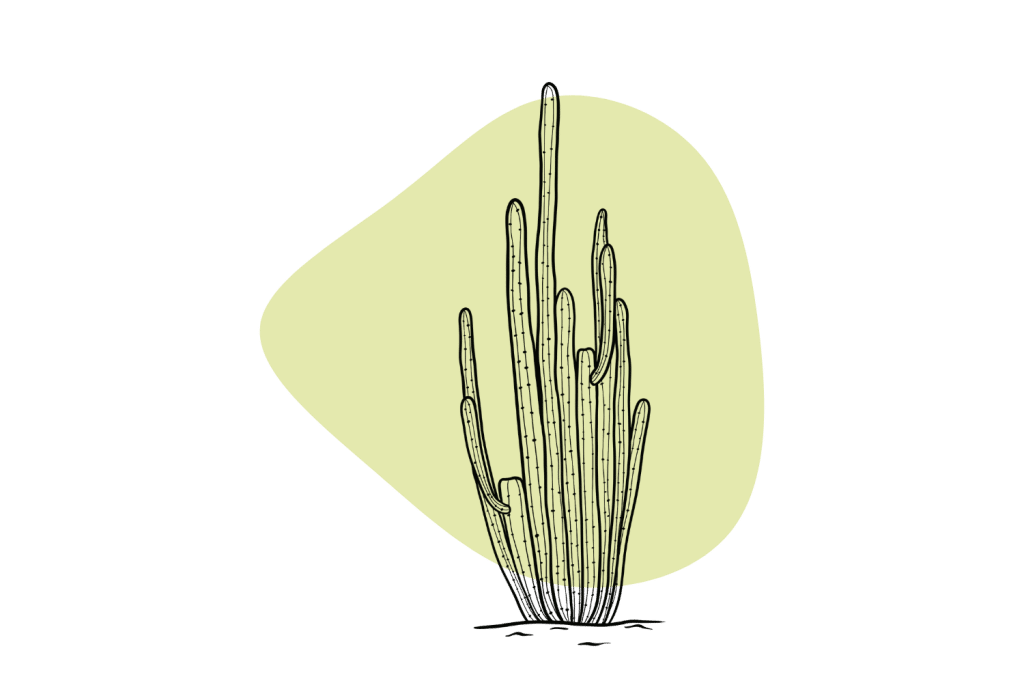
Psychedelics That Don’t Have Trip Killers
Some psychedelic substances do not have trip killers. Not all psychedelics affect the brain in the same way; therefore, trip killers, such as benzodiazepines, will not end all psychedelic experiences.
For example, many dissociative drugs like PCP or ketamine work via the NMDA receptors in the brain. The psychedelic trips these drugs produce appear to be unaffected by benzodiazepines. Making matters worse, most dissociatives are also considered sedatives — which are notoriously dangerous to mix with benzodiazepines.
Other substances, such as salvinorin A from salvia or any of the deliriant hallucinogenics, don’t diminish after taking benzodiazepines or Z-drugs. There are no effective trip killers for these substances.
If you plan on consuming any of the substances listed below, be warned that you have no option but to ride the experience out naturally. Never consume a substance that you’re not comfortable with.
It’s a good idea to have a trip sitter around that you trust who can help you through a difficult experience should it arise.
Here are some of the more common psychedelic substances that do not have effective trip killers:
- Datura (a hallucinogenic flower from the nightshade family)
- Brugmansia (commonly known as angel’s trumpet)
- Phencyclidine (and other arylcyclohexylamines)
- Ketamine (and other dissociatives)
- Grayanotoxins (found in Rhododendron flowers)
- Xenon gas or nitrous oxide gas
- Salvia divinorum

When Should You Use a Trip Killer?
Preferably, you should never consume a trip killer. A “bad trip” can often unlock a door that will show you traits in our personality (our “shadow”) or traumas and aspects in life that we need to heal in order to live a better life.
A typical “bad trip” is often a lesson containing vital information we can use to work on ourselves and get over mental blocks that reduce our quality of life. Using a trip killer to end an experience like this may be counterintuitive. Doing so could close “the door” that leads to healing.
1. Are You In Over Your Head?
Many experienced psychonauts swear off ever needing to consume trip killers to end a trip because they believe every vision has value. However, trip killers definitely have their place. You should always be safe rather than sorry and never bite off more than you can chew in terms of set, setting, and dosage. End the trip if you feel you’re in over your head.
As long as you use psychedelics responsibly, you’ll likely never need a trip killer. Proper dosing is the best way to ensure this, but having your frame of mind and setting fit for a psychedelic trip is also important. This way, if a bad trip occurs, you have the strength to deal with it.
2. Are You or Those Around You At Risk?
Sometimes, we don’t get it right. A “bad trip” can spiral out of control into a nightmarish event that can be truly traumatic. When this happens, you and the others around you could be at risk.
People who swear off trip killers may have experienced a challenging trip but may not have had a truly terrifying one. It may never happen, but it could occur at any time, so it’s always wise to have some form of trip killer available.
A nightmarish loop of events during a trip can seem to last forever, and in some, it can lead them to cause harm to themselves or others. This is rare but not unheard of. Trip killers can be a lifesaver for those who find themselves trapped in such a situation.
In our opinion, trip killers should be a part of every psychonaut’s tool kit. You should strive never to use them, but they should be readily available in case a trip takes a dark turn that you feel you can’t benefit from or work through without putting yourself or others at risk.
3. Do You Need to Sober Up ASAP?
No matter how responsible you are when planning a psychedelic trip, there are times when circumstances come up that are outside your control. You think you have the day to sit and trip, but suddenly something comes up (family emergency, etc.), and you need to be sober ASAP.
Even though a trip killer won’t make you feel “normal,” it’ll speed up the process and make you more clear-headed than you would be without it.
Who Shouldn’t Use Benzodiazepine-Based Trip Killers
Some people should avoid benzodiazepine-based trip killers at all costs. This section outlines who should not take these types of trip killers and what they can use instead.
Although most psychedelics aren’t addictive, benzos definitely are. Anyone with an addictive personality or who has had a past dependence on benzos or similar substances should avoid using these as trip killers.
Benzos have some of the longest-lasting, worst, and most savage withdrawals of any substance on the planet.
Withdrawal symptoms can last for months. If you become addicted and prolong the use of these substances, quitting cold turkey isn’t an option. Simply quitting after prolonged benzo abuse can be life-threatening due to the body seizing up.
In simple terms: don’t use benzo-based trip killers if there’s a chance you’ll get addicted to them.
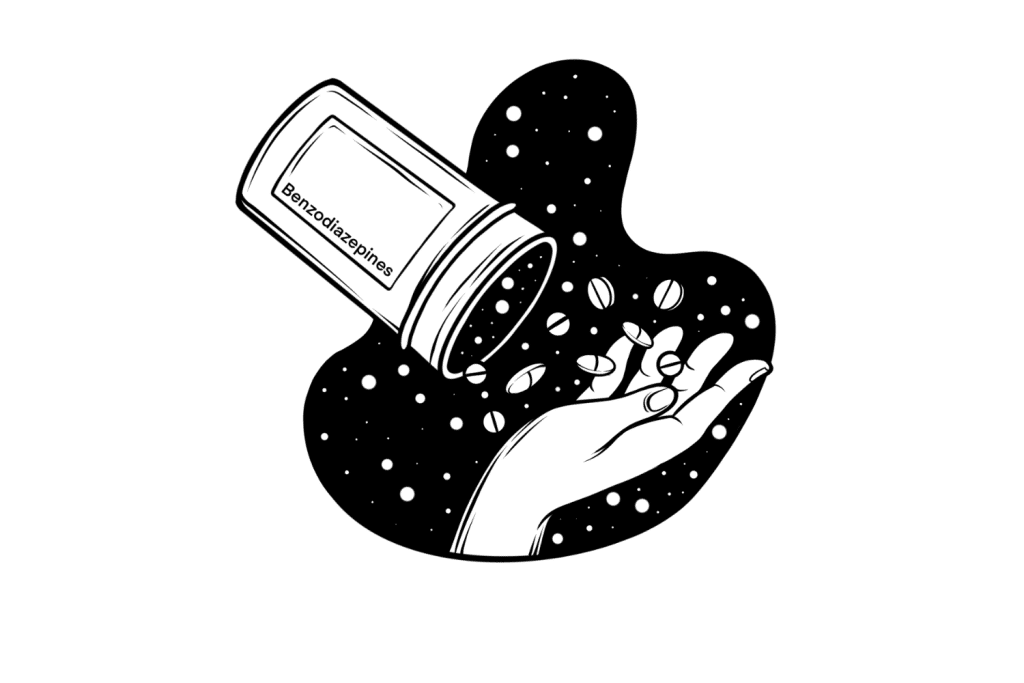
What To Expect When You “Kill” a Trip
As I’ve mentioned, trip killers aren’t an instant solution. You’re not going to magically become sober as soon as the pill touches your tongue. The onset time and experience will vary depending on the type of trip killer consumed, the dosage taken, the psychedelic consumed, and how far into your trip you are.
That being said, I can give you a rough idea of what happens when consuming a benzodiazepine trip killer during a bad experience.
1. The “Bad Trip”
Let’s paint a hypothetical picture.
A few hours after consuming your chosen psychedelic, you enter an area of dark and disturbing thoughts somewhere in your subconscious mind. At first, tell yourself, “It’s okay; it’s just the psychedelic messing with my brain.”
After a while, you start to convince yourself that this is, in fact, real, and you begin to sink into nightmarish thought loops.
2. You or Your Trip Sitter Realize It’s Time for a Trip Killer
If the situation starts to get out of hand, a trip killer might be employed to bring you back to some semblance of reality.
You chew one milligram of Xanax in the hope that the sublingual absorption will allow it to take effect quickly.
3. You Enter “The Placebo Effect”
Although unpleasant, the acrid taste of the trip killer in your mouth relieves you. You associate the taste with the trip coming to an end. When you swallow your saliva, you feel a wave of calm rush over you because you know that this nightmare will all be over soon.
4. The Trip Killer Begins to Take effect
About 15 to 30 minutes later (depending on the trip killer consumed), you notice a wave of relaxation come over you. Any feelings of anxiety and panic start to wash away as the drug begins to take effect.
Not only do the dark thought loops start to diminish, but you also start to feel as though you don’t care about much of anything at all. You become emotionless and calm. You may or may not continue to experience hallucinations, but none of them seem to steal your attention.
If you’re not laying down already, you’ll probably seek out somewhere to post up and relax for a while as your muscles start to feel weak.
5. The Trip Comes to An End
One hour after taking the trip killer, your hallucinations have likely died down substantially, and you feel much more rational and level-headed. You may even regret taking the trip killer — if you were in this head space originally, perhaps you wouldn’t have had such a terrifying experience.
6. You Feel Almost Sober
Two to three hours after ingesting the trip killer, you feel more or less sober (depending on the psychedelic you consumed). Most of the effects of the psychedelics have worn off, and if you’re not already asleep, you’re probably feeling pretty drained and ready for some zzz’s.
You’ll be emotionally and physically exhausted by this time, and you’ll likely reach for a bottle of water and a hefty snack to restore the energy lost throughout the ordeal.
Safety Aspects to Consider When Using Trip Killers
There are a few things to consider when purchasing and adding trip killers to your psychedelic tool kit. The most effective trip killers — benzodiazepines — are restricted in terms of sale and use. This can make it difficult to legally purchase these drugs, which is where our first safety aspect stems.
1. Sourcing the Trip Killers Responsibly
If you cannot obtain trip killers (benzos) in a legal way — via prescription from a doctor — the level of risk goes up substantially.
The most popular benzodiazepines for recreational use are Valium (diazepam) and Xanax (alprazolam). These can be obtained on the black market, but it’s not recommended.
Illegal vendors distributing Valium and Xanax don’t necessarily consider the consumer’s best interest. Several samples of these substances have contained drugs such as fentanyl (an extremely dangerous synthetic opioid).
Clandestine drug manufacturers use tablet molds that produce exact replicas of the prescribed Xanax and Valium tablets. Criminals produce pills with these molds that look the same but contain a cocktail of potentially life-threatening substances. Whether you’re tripping or not, taking one of these pills at any time may pose a serious health risk.
Basically, unless you’re getting your drugs from a pharmacy, you can never be sure the drugs you’re using are safe.
If you absolutely have to purchase “trip killers” from the black market, you must test them using — at the minimum — a fentanyl test kit. We cannot stress this enough.
You can also buy benzo test kits to help identify what adulterants may be contained in your pills.
You should check your benzos before you need them. You’re not going to have time to test them for safety if using them as a trip killer.
2. Get The Dose Right
Another safety aspect to consider is, of course, dosage. Getting the correct dosages for each substance is critical to avoid overdosing. However, you also need to consume enough of the substance to kill a trip.
Several individual drugs fall under the benzodiazepine classification; although similar, the required dosage for each differs.
It’s important to note that your weight, gender, and familiarity with the drug will affect the exact dose. A heavier person that regularly consumes benzos will need a far larger dose than a small-framed person that has never tried the substance before.
Below I’ve listed the recommended dosages of the four most popular trip killers based on first-hand reports and prescribed dosage guides. However, you should take these numbers with a grain of salt and do your own research outside before consuming anything to kill a trip. These substances can be dangerous.
- Alprazolam (Xanax): 0.5 to 1 mg
- Lorazepam (Ativan): 0.5 to 1.5 mg
- Diazepam (Valium): 5 to 10 mg
- Clonazepam (Klonopin): 1 to 1.5 mg
As you can see, the recommended dosages for killing a trip vary and depends on where you are on your trip.
Again, I can’t stress this enough — everyone’s required dosage will be different because of a variety of factors. Unfortunately, your required dose will be something you’ll have to find out through experience. Just be aware that trip killers of this nature don’t work immediately, so don’t keep dosing if you don’t experience any trip-calming effects right away. This is how overdoses occur.
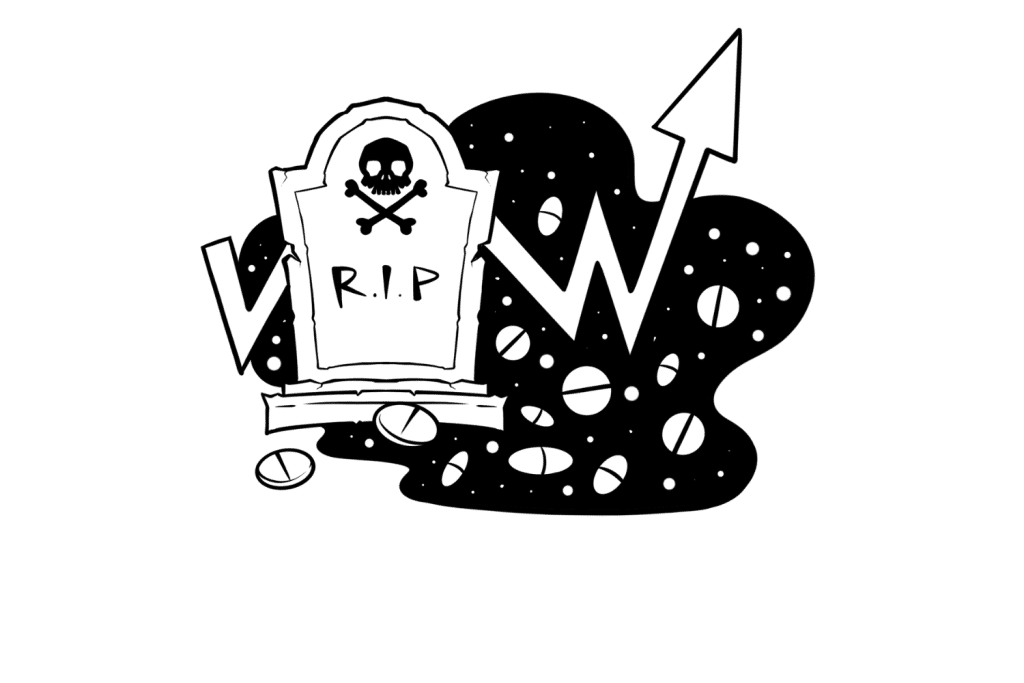
How To Minimize the Risk of a Bad Trip
Trip killers should only be used in an emergency when a trip takes a dark turn that could harm you or others around you. It’s best to avoid trip killers at all costs, and these steps can also help you have the best trip possible.
Preparation is key. If you’ve experimented with psychedelics before, you must have heard of set and setting.
Set (Mindset)
The set is the frame of mind you’re in. When consuming psychedelic substances, you should never be in a negative, anxious, or unstable state of mind. Entering a trip with negative thoughts in your head is a surefire way to a nightmarish trip.
It’s important to relax your body and mind before entering a trip. This can be done by simply putting yourself in a good headspace by recalling a positive memory or experience. Practicing meditation and/or yoga can also help you relax into a positive state of mind.
Setting
The setting is the space you’ll experience the trip in. The setting is extremely important in psychedelics and will help you stay in the right “set.” Playing relaxing music, putting beautiful pictures around you, and lighting a few candles can make the setting more relaxed and inviting.
Many people also like to trip out in nature. This is a fantastic way to do it; however, several variables can affect your trip.
If you head out into nature for a psychedelic trip, ensure it’s in a safe area with no foot traffic. Make sure the weather is good, and there are no external factors that may “freak you out.” The last thing you want is bad weather (a storm, for example) or a stranger entering your space — this will likely lead to a bad experience.
Another way to ensure a smooth trip is to have an object nearby that means something to you. This object helps connect you to the physical world and can get you back on course if your trip dives into a dark place. Simply holding the object and looking at it may just be enough to snap you back to reality.
This technique is definitely something to try before resorting to the use of trip killers.
Final Word: Using Trip Killers
Trip killers may be an important part of the psychonaut’s tool kit. Hopefully, you will never need to use them, and you should strive to work through difficult experiences rather than chemically halt them.
However, if you have a truly terrifying psychedelic experience, they will help you get back to reality as quickly and safely as possible.
The most popular and effective trip killers are benzodiazepines or Z-drugs, but some antipsychotic medications are also effective and a good alternative for people with addictive personalities.
When sourcing trip killers, it’s important to test their purity. Several drugs on the black market are contaminated with fentanyl — an extremely dangerous synthetic opioid that’s similar to morphine but much stronger. This drug can be life-threatening, so it’s of paramount importance that any drug sourced on the black market is tested thoroughly.
Regardless of whether you have trip killers available, you should always practice safe psychedelic use. Ensuring that your set and setting are perfect before a trip helps mitigate the risk of a bad trip occurring. As we said, you should never need to use a trip killer, but they should be available as an absolute last resort.

